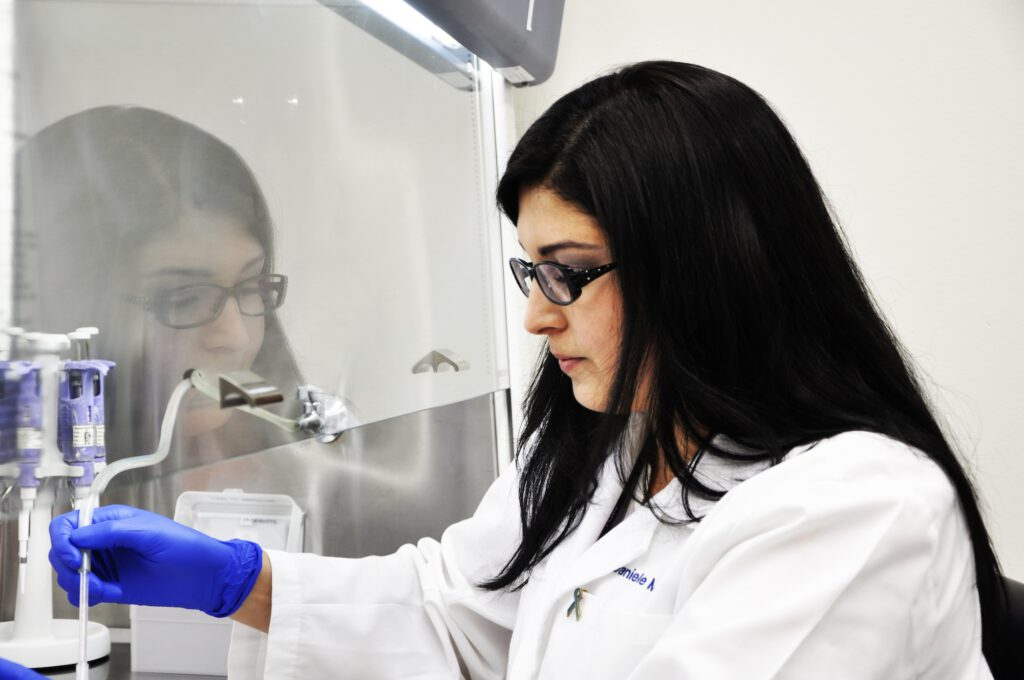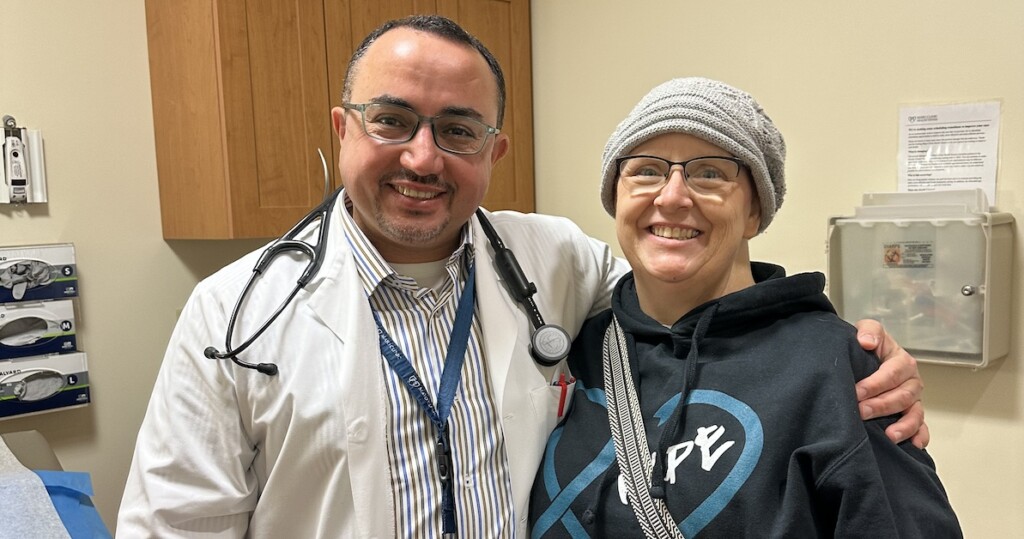
Gynecologic Cancers
Recognizing the interconnectedness of ovarian and all gynecologic cancers, OCRA expanded its scope in order to accelerate research and broaden our impact on patients’ lives.
Vaginal cancer is a rare gynecologic cancer, affecting fewer than 1 in 100,000 women.
Vaginal cancer starts in the vagina, the tube that goes from the cervix (the lower part of the uterus) to open up at the vulva (the external genitals). About 85% of cases of vaginal cancer are squamous cell carcinomas, which begin in the epithelial lining of the vagina.

OCRA’s online Clinical Trial Navigator is an easy-to-use tool that helps you find clinical trials near you for vaginal cancer. Search by cancer type, treatment history, location, and more.
There is no dedicated screening tool for vaginal cancer. In some cases, pre-cancerous changes in the vagina can be found with a Pap test — however, these tests are not validated screening tools for vaginal cancer. Vaginal cancers can also be identified during pelvic exams.
Vaginal cancer may be asymptomatic or may be associated with symptoms depending on the size of the tumor and its location. When present, symptoms of vaginal cancer can include one or more of the following:
Advanced vaginal cancer means the cancer has spread beyond the vagina into nearby parts of the body or lymph nodes. Advanced vaginal cancer symptoms can include painful urination, constipation, pain in pelvis or lower belly, back pain, or swelling in the legs. For more detailed information about vaginal cancer, visit the American Cancer Society.
Though many who develop vaginal cancer have no clear risk factors, certain factors may increase the chances of developing vaginal cancer, including:
There are several different types of vaginal cancer, including:
A biopsy is ultimately needed in order to confirm a vaginal cancer diagnosis. If a doctor suspects a patient may have vaginal cancer, they may perform tests including;
Vaginal cancer stages range from stage 1 (1) to stage 4 (IV). A lower vaginal cancer stage indicates more localized disease, whereas a higher stage indicates the cancer has spread. The stage of vaginal cancer will help inform next steps as far as treatment and prognosis.
A condition called vaginal intraepithelial neoplasia (VAIN) refers to the presence of pre-cancerous cells in the vagina. This is sometimes referred to as stage 0 vaginal cancer. Depending on the type of pre-cancerous cells, doctors may choose to treat VAIN right away, or take a wait-and-see approach. See details about vaginal cancer stages from the American Cancer Society.
Depending on the stage of vaginal cancer, or in some cases pre-cancer, doctors will recommend a course of treatment. Treatments for vaginal cancer may include:
If cancer returns after treatment, it is called a recurrence. Not every patient will experience a recurrence, but if they do, the cancer may return near the area where it first developed, or elsewhere in the body. Plans for treatment and care should be discussed with a patient’s medical team. Some patients may wish to participate in a cancer clinical trial.
Survivors of vaginal cancer have an increased risk of developing other HPV-related cancers, including vulvar or cervical cancer. Vaginal cancer survivors may also be more likely to develop lung cancer or bladder cancer, though this may be due to the fact that smoking is a shared risk factor for vaginal, lung, and bladder cancer.
Vaginal cancer survival rates vary based on whether the cancer is first detected and treated while it is still localized and how far it has spread. The relative five-year survival rate is 69% for vaginal cancer found at a localized stage. The relative five-year survival rate is 57% for vaginal cancer with regional spread, through the vaginal wall or nearby lymph nodes. The five-year relative survival rate is 26% for vaginal cancer that has spread to distant organs, such as to the liver, lungs, or bones.
The average age of diagnosis of vaginal cancer is 69. According to the CDC, in the U.S., 1,372 women were diagnosed with vaginal cancer in 2021 (the latest year for which data is available) and 434 women died from vaginal cancer in 2022.

Recognizing the interconnectedness of ovarian and all gynecologic cancers, OCRA expanded its scope in order to accelerate research and broaden our impact on patients’ lives.

Explore new treatments for ovarian and gynecologic cancers.

Locate gynecologic oncologists, specialists, and treatment centers in your area.
Get email updates about research news, action alerts, and ways to join the fight.